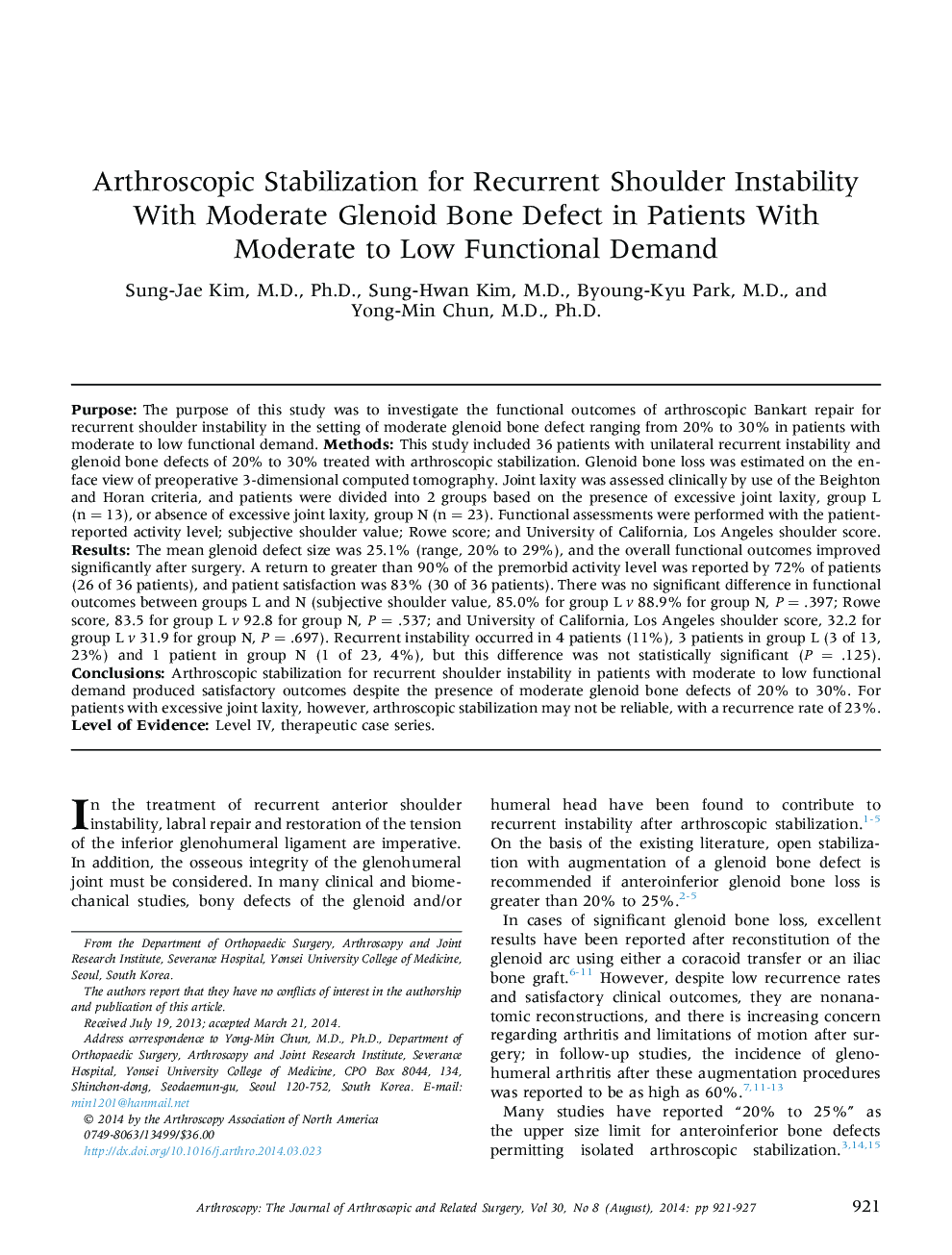| Article ID | Journal | Published Year | Pages | File Type |
|---|---|---|---|---|
| 4043010 | Arthroscopy: The Journal of Arthroscopic & Related Surgery | 2014 | 7 Pages |
PurposeThe purpose of this study was to investigate the functional outcomes of arthroscopic Bankart repair for recurrent shoulder instability in the setting of moderate glenoid bone defect ranging from 20% to 30% in patients with moderate to low functional demand.MethodsThis study included 36 patients with unilateral recurrent instability and glenoid bone defects of 20% to 30% treated with arthroscopic stabilization. Glenoid bone loss was estimated on the en-face view of preoperative 3-dimensional computed tomography. Joint laxity was assessed clinically by use of the Beighton and Horan criteria, and patients were divided into 2 groups based on the presence of excessive joint laxity, group L (n = 13), or absence of excessive joint laxity, group N (n = 23). Functional assessments were performed with the patient-reported activity level; subjective shoulder value; Rowe score; and University of California, Los Angeles shoulder score.ResultsThe mean glenoid defect size was 25.1% (range, 20% to 29%), and the overall functional outcomes improved significantly after surgery. A return to greater than 90% of the premorbid activity level was reported by 72% of patients (26 of 36 patients), and patient satisfaction was 83% (30 of 36 patients). There was no significant difference in functional outcomes between groups L and N (subjective shoulder value, 85.0% for group L v 88.9% for group N, P = .397; Rowe score, 83.5 for group L v 92.8 for group N, P = .537; and University of California, Los Angeles shoulder score, 32.2 for group L v 31.9 for group N, P = .697). Recurrent instability occurred in 4 patients (11%), 3 patients in group L (3 of 13, 23%) and 1 patient in group N (1 of 23, 4%), but this difference was not statistically significant (P = .125).ConclusionsArthroscopic stabilization for recurrent shoulder instability in patients with moderate to low functional demand produced satisfactory outcomes despite the presence of moderate glenoid bone defects of 20% to 30%. For patients with excessive joint laxity, however, arthroscopic stabilization may not be reliable, with a recurrence rate of 23%.Level of EvidenceLevel IV, therapeutic case series.
